A brief (and entirely anecdotal) Review of “Renewable” Energy in the Majority World
How far along the Green Energy Transition is the rest of the world, and what are the impacts? --- [Estimated reading time: 25 min.]
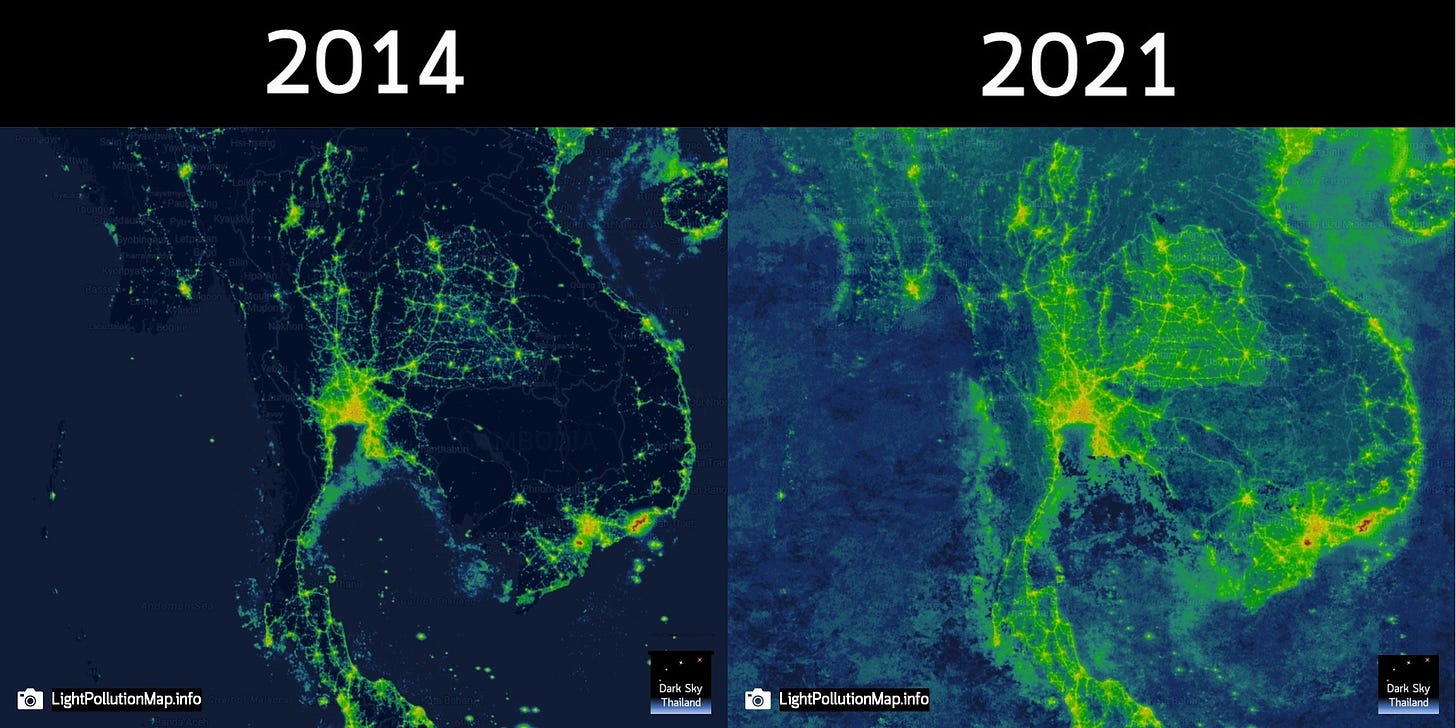
Solar panels will save the world – or so the elites and their propaganda outlets want us to believe.1 Investment in solar is on the rise, “solar farms” plaster the landscape, and everyone in the Minority World2 (which likely includes you, dear reader) can see it happening in front of their own eyes. But what about other parts of the world, what about those countries that are not English-speaking and/or overdeveloped – the so-called Majority World? How far along are “developing” countries in their “clean energy transition”?
I, of course, am in no position to speak for the entire Majority World and its billions of inhabitants, but I can recount what I’ve witnessed in the past decade here in Thailand. In only ten short years, the Southeast Asian kingdom has developed at breakneck speed. With new hotels, factories, retail stores, 7-Elevens, food and coffee shop franchises, and entire shopping malls shooting up everywhere in a matter of mere months, this can be felt throughout each sector of society, in every corner of the country. But how will all those new businesses and enterprises be powered in the future? How close to the ultimate goal, “Net Zero” – to be attained in 2065, we promise! – is this rapidly expanding economy in tropical Asia?
What you won’t find in this article is an abundance of numbers, data, statistics, sources and references. This is not intended to be a serious official report, overwhelming people with boring lists of numbers they won’t remember anyway. What follows is based entirely on my own observations, which nonetheless suffice to serve as an example for the entire region (and probably the Majority World at large), since what I see happening here corresponds neatly to what I read and hear about concerning other countries in similar circumstances.
Personally, I don’t get around much (I have slept every single night for the past five years here in our garden), but since we occasionally host volunteers, we hear stories and first-hand experiences from a wide range of countries all around the world.
Electrification is widely seen as a Universal Good, the first step on the ladder that leads out of the primordial mud of pre-industrial life and (presumably) straight into Heaven, at least eventually. In reality, it is the first step in the extinction of any unique, land-based, low-impact culture. Electricity is supposed to make life easier, but what happens in virtually all cases is that as soon as a traditional society has access to electricity, someone drags in an old television set – and cultural collapse is set in motion. In the 1980s, indigenous rights activist Bruno Manser stayed in a traditional fishing village on the Northern Malaysian coast, in which – every single evening – the entire village got together, ran a large and deafeningly loud diesel-powered generator, and watched movies until late at night. Kids played “war,” using sticks as guns, and the behavior of teenagers resembled those of Hollywood movie stars. US-American “soft power” took the imagination of the entire planet hostage.
Would this process of (partly self-inflicted) ethnocide have unfolded any differently if the fishing village had used a solar panel instead of a diesel generator? And, taking the thought a bit further (a profound question we will explore later): is electricity really necessary in order to live a decent life?
All things considered – runaway climate change, mass extinctions and whatnot – does the electrification of every imaginable aspect of our lives really make our lives any better in the long term?

Electricity consumption, inextricably linked to the burning fossil fuels, has steadily increased since the dawn of the Industrial Age – I doubt that there are many fishing villages left in this world that don’t have a TV. But as it becomes increasingly obvious that the continued use of fossil fuels would likely render this planet uninhabitable for humans and most other complex life forms, and that oil is indeed a finite resource of which all easily accessible reserves have already been extracted, a frantic search for alternatives has been set in motion.
In the past few decades, people in the Majority World got enough of a taste of “the good life” – a high-impact Western middle-class consumer lifestyle, exactly the kind of life they see advertised on TV – for them to become hooked instantly. Now, they demand the same standard of living, and they are not ready to forfeit their chance at the Global Empire’s most-sought-after export: the “American Dream.”
Reducing anything is simply out of the question. Eager to expand markets, Western corporations have dangled this particular carrot in front of people’s faces for long enough to brainwash entire cultures into believing that it is their birthright to get rich and live just like their favorite soap opera characters.

Meanwhile, no second thought is given to the massively inflated ecological footprint this endeavor would require. After all, we are told, the “transition to renewables” that is somehow expected to make this lifestyle less destructive & wasteful is well underway by now.
But the problem is that, as elsewhere in the world, electricity from solar and wind rarely (if ever!) replaces electricity generated by the combustion of fossil fuels, but simply adds to the mix. In the “best case scenario,” fossil fuel consumption stays more or less the same, with any additional increase stemming from alternative sources. So far, solar and other “renewables” have only added to the overall energy consumption, not reduced any other energy source. And as soon as Germany, the “green Energiewende” poster child, realized that its economy is threatened by high energy prices due to the war in Ukraine, old coal-fired power plants went straight back online. But chances are high that you know that already.
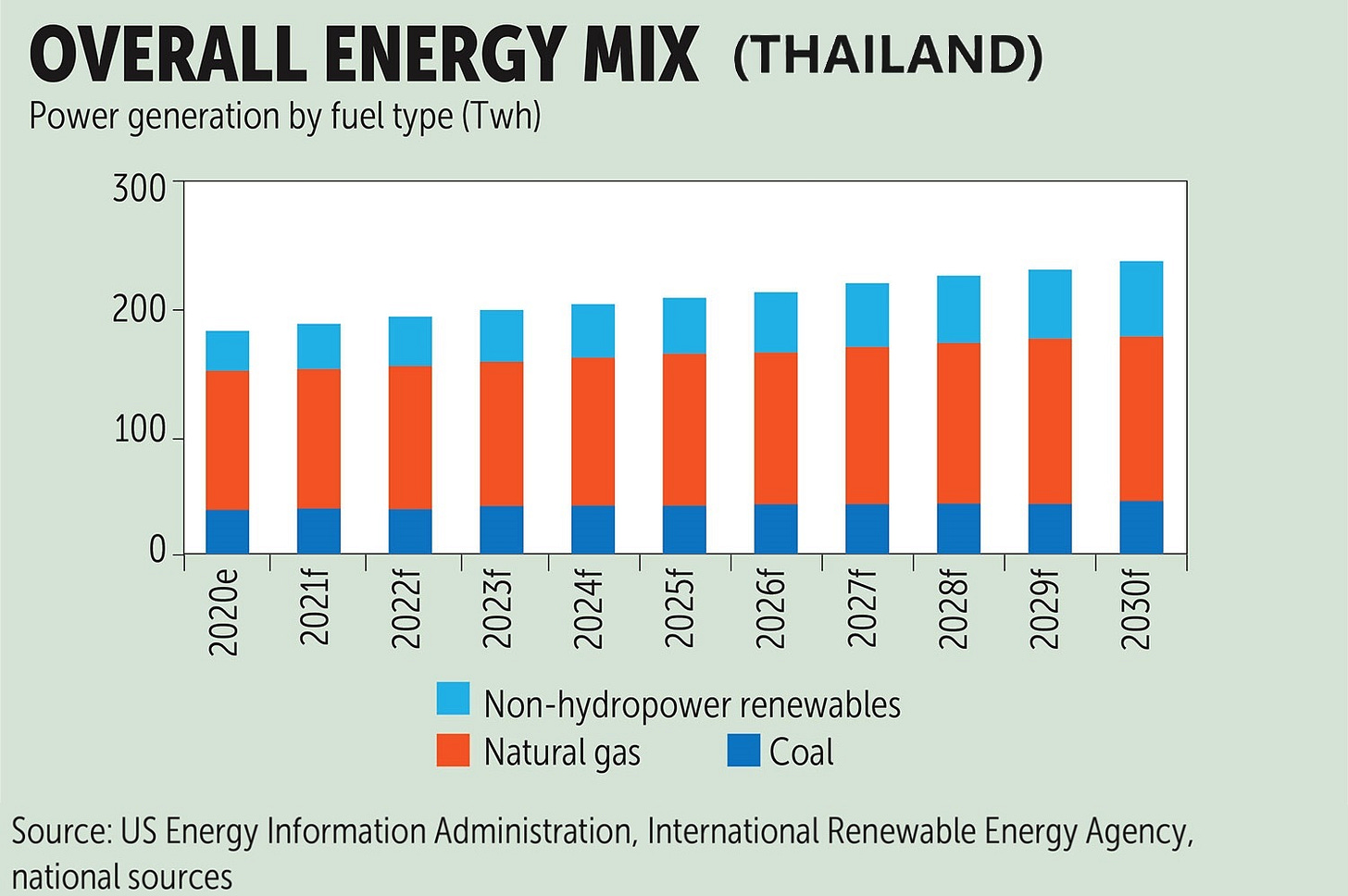
Every few months, an article about someone who reduced the cost of his electricity bill by installing solar panels on his roof makes its rounds on Thai social media. Utility costs are rising fast, so articles like this are able to garner a good deal of attention – but usually this “green transition” is only possible after investing several hundred thousand Baht worth of equipment. In one example, a man from Phitsanulok bragged online about paying only 44 Baht (1.24 USD) for electricity each month, despite having three A/Cs running 24/7 (which is, arguably, pretty stupid and wasteful in and of itself). But the crux is this: he paid over 300,000 Baht (8,500 USD) for the entire PV system – a small fortune in a country in which minimum wage stands at about 120,000 Baht per year (3,400 USD).
Rooftop solar, at least on the scale required to power an average household, is widely considered to be a plaything of the wealthy among the rural population, a pastime for those who have enough disposable income to cut expenses in the long term – creating even more inequality down the road. As we will explore in a minute, “poor people” – the majority of Thai citizens – do surf the wave of “green energy,” but usually in much shallower waters.
Admittedly, there are a few smaller solar farms here and there, utterly insignificant to the electricity grid at large judged by their size, and we drive by one of those on the way to the city. They are usually fenced in with barbed wire, equipped with an electronic anti-theft system and/or CCTV, and all underlying vegetation is regularly annihilated with herbicides. Probably owned by some medium-sized business or another, they fulfill the purpose of greenwashing said business, maybe qualifying it for some tax exemptions, or earning it “sustainability certificates” for the highly touted BCG economic model (which stands for “Bio-Circular-Green,” an attempt to include as many trendy environmental buzzwords as possible into the Next Big Government Campaign that will finally solve all the problems plaguing the country).
Sometimes you see a few solar panels in the cities, proudly set up in the most visible spot (not necessarily the sunniest one) in front of the buildings instead of on the roofs, that supposedly supply (some negligible quantity of) electricity for public buildings or various government offices.
But high-profile guests like foreign politicians will be sure to be dragged to one of the few larger solar farms in the country, and told that this is how progressive Thailand is in terms of alternative energy.
And now, can we have a bit more “development aid” to build more of them? Please?!
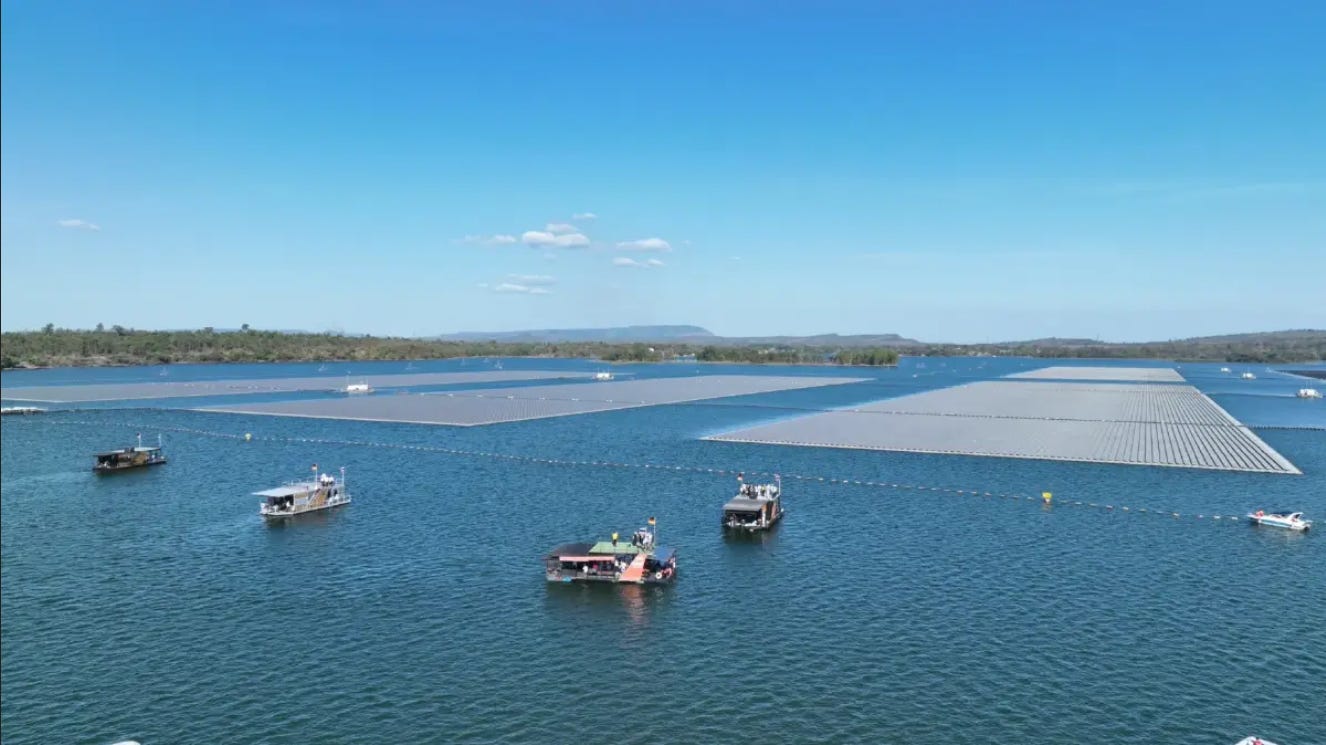
Meanwhile, the new Thai prime minister Srettha Thavisin is busy grooming Elon Musk into opening a Tesla factory (a “high-capacity production base”) in Thailand, and the government’s grand plan to solve the climate crisis is to simply attract more (“green”) foreign investment – remember, nothing screams “sustainable!” quite like a massive new factory rolling out even more cars.
Srettha is a business mogul (the former chief of one of Thailand’s biggest real estate developers), and he plans on running the country like a business:3 he promises to develop the living bejesus out of every last corner of the Kingdom. When he’s not posing on top of a “cybertruck” like he’s imitating a 2000s hip-hop music video, Srettha is diligently touring the world, meeting other political leaders and courting businesses and investors to spend money on opening even more factories in Thailand. Under his rule, Thailand is poised to become the ASEAN’s main EV hub, producing batteries, electric cars, and a steady base load of “sustainable, clean, green energy” to power all that additional industrial capacity (in theory, at least).
The ruling class seems to be so utterly disconnected from reality that they actually believe that future problems can be solved through more investment, more economic growth, more factories, more cars, more digitalization, and more travel. They really think that this is where the world is headed: a bright green techno-utopia, where AI does all menial tasks and hard labor, and we can lean back and explore all corners of the Metaverse. All we need is diligence, dedication, and – most importantly – optimism.
Everyone agrees that Thailand is not quite there yet, but if we all just hang in there and toil away for a tiny bit longer, we will surely reach the Promised Land – it is almost within reach!
And then, Thailand hit the jackpot – almost:
Two months ago, a Thai government spokeswoman enthusiastically announced the discovery of vast lithium reserves in southern Thailand, a quantity so large that it would catapult Thailand to the third place (!) in terms of global lithium reserves (just behind Bolivia and Argentina). And while the Thai media enthusiastically picked up the story, the international media was eerily quiet (as were major industry publications) – especially when compared to the alleged magnitude of the find.
As it turns out, international news outlets might just have read the actual research this claim was based on, and consequently discovered that the number “14.8 million tons” refers to the overall quantity of ore, of which lithium will be a miniscule fraction (about 0.45%).
The government spokesperson backpedaled a few days later, after several academics pointed out the inconsistencies. Her excuse was – and you might want to sit down for this – she just wanted to bring “good news” to the people.
This is exactly what’s wrong with society!
Unable to process and integrate what’s happening, people retreat to a fantasy world where the future still looks bright and things get steadily better as we progress our way towards the stars. The elites are entirely unaware of the depth and breadth of the current crises, because a) their scope of awareness is too narrow, b) they are more focused on self-aggrandizement and the securing and expansion of their personal power & influence, c) they live isolated lives of unimaginable privilege and seldomly venture out of their narrow social circles, and d) because they’re surrounded by yes-men whose job it is to tell them what they want to hear, despite it sounding more and more like a cheap sci-fi novel. The utter incompetence of those supposedly leading and guiding society is becoming more obvious than ever in the Social Media Age of unfettered transparency.
Objectively, there are just not many “good news” these days, so we might as well make them up in order to cheer up the people and recharge their optimism (and hope that we don’t get caught bending facts).
So far, this strategy seems successful: there is not a single voice in the Thai mainstream media that’s not religiously optimistic when it comes to the future of “renewables.” All the myriad downsides, like their massive upfront resource and energy requirements (including mining, milling, leaching, refining, smelting, alloying, transporting, and all the environmental devastation this entails), ecological impact, intermittency, and their relatively short life cycle, are simply ignored. Without a single news source to provide a more balanced picture (and as a society that consistently ranks among the world’s lowest in terms of critical thinking) what else can people do but believe the propaganda?
But while well-off urbanites might be able to endure the resulting cognitive dissonance (at least for the moment), most people here in the countryside (and, presumably, a growing fraction of the urban poor) are becoming painfully aware of the disconnect between the government’s big words and, well, reality. Many have quietly stopped believing in a better future, and this hopelessness manifests, among other things, in rampant alcoholism.
But what’s still missing in Thai society is an open conversation about the issue, that could perhaps be kick-started by some well-liked public person daring to speak the scary truth out aloud: “Renewables” won’t save us.
This is as good a place as any to state that we do, indeed, use solar energy ourselves as well. Not only in the obvious form of calories stored in plant and animal tissue, but as in “sun rays converted into electricity through advanced technological means.” After living virtually without electricity for the first two years here, we now use a small solar system.4 We charge our phone daily, our laptop every few days, have a small fridge5 running during the daytime, and use some LED lights under and in the house at night. In dry season, we use the stored electricity to power a 1.5HP motor that drives our water pump for about 15-20 minutes per day.6
We make sure that our battery capacity never drops below 75%, since the DoD (depth of discharge) determines how long your batteries will last. For us, this works magnificently – but we have neither TV, nor A/C, nor a fan, a rice cooker, a blow-dryer, a washing machine, a microwave, an electrical toothbrush, or a WiFi router. We don’t use electric drills, saws and other power tools, nor any of the other many appliances, tools and machines found in regular Thai households.
It is blatantly clear for us (and for anyone we know who uses solar energy) that rooftop PV isn’t a solution for anyone who’s a) not rich and b) not willing to drastically reduce their standard of living. And reducing anything goes against the current cultural tide, what I like to call “the raging torrent of the mainstream.”
No, maximization is the current maxim. The more, the better.
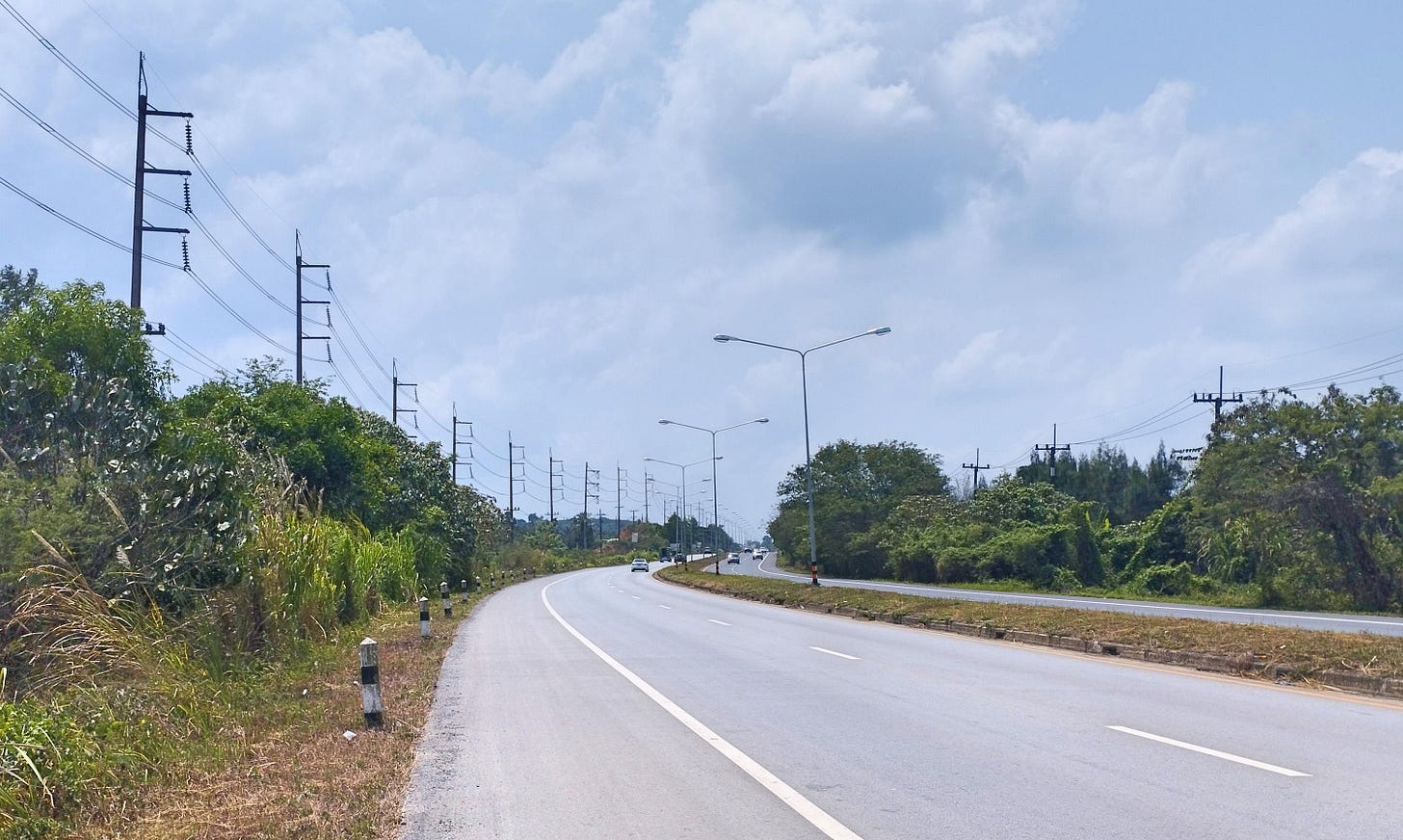
Nowhere is this more obvious than along Thailand’s roads. Virtually every highway and many rural roads now have streetlights every ten meters, even along relatively quiet sections where they aren’t needed at all.7 Some are even equipped with tiny solar panels on top. “Good for the environment,” one might think, if it wasn’t for the fact that tens of thousands of additional streetlights were produced (from non-renewable resources, using fossil energy) that society did just fine without only a few years ago. You can’t simply increase the production of industrial products and at the same time claim that this is somehow “good for the environment” because it has yet another piece of advanced industrial tech attached to it. And is the thing we really need in these times actually more light along the roads?!
Every car has headlights, but people stubbornly insist that it is “safer” the more light there is at night. A primordial Fear of the Dark spurs peoples’ imagination, and “light” is, according to the dominant culture’s mythology, always preferable to “dark.” But research has shown repeatedly that this is simply not the case: more light reduces neither crime nor road accidents.
But tell that to the ignorant masses.

There is only one way, and it neatly follows the exponential curve of the Great Acceleration – and this is pretty much how it feels like. It has gotten a lot brighter at night. While a complete (or even partial) switch to “renewables” usually vastly exceeds peoples’ purchasing power, people in the countryside are busily buying small solar panels (in the range of 24W-100W) that are sold (quite cheaply) in sets, complete with inbuilt battery and ultra-bright LED floodlight. All you have to do is set it up – as soon as it gets dark, the light automatically switches on and burns for the entire night.
By now, those PV-floodlight sets dot even the tiniest little dirt roads in the backcountry, and areas that were completely dark just a few years ago are now brightly illuminated, all night long, by high-intensity LED flood lamps. People’s field huts and garden sheds now all have solar-powered LED lights, and – since we’re living in “Elephant Country” – people set them up literally everywhere, because they (falsely) believe that the lights might deter wild elephants (newsflash: they don’t!).
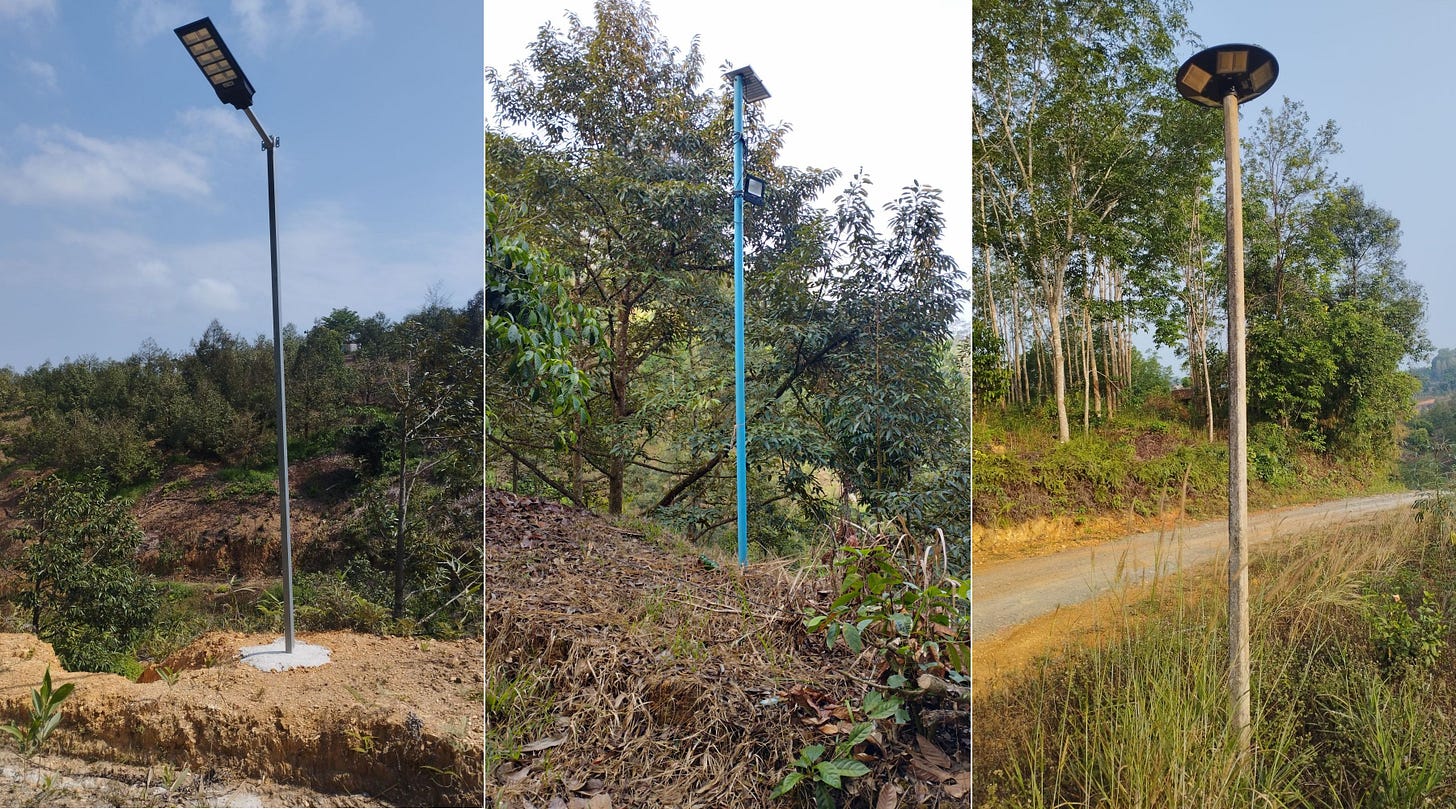
What they do is kill insects. Hundreds, maybe thousands of them per night, depending on the season. Many nocturnal insects navigate using the moon, and they mistake bright lights for an exceptionally bright full moon. But whereas the moon always stays where it is, the floodlight is stationary. Once you’ve passed it you seem to be off track, so you correct your course, as your instinct compels you to, so that the moon is, say, again over your right shoulder. Soon, you’re flying in circles around the artificial light source until you collide with an obstacle or become too tired to continue flying.
On the ground, bullfrogs, lizards and toads wait patiently to obliterate every insect unfortunate enough to have been caught in the cone of light.
To me, light pollution is probably the most annoying and enraging form of pollution (together with noise pollution). Not because it harms me, personally, but because nobody is even aware that this is a form of pollution, and that it severely impacts ecosystems for no reason other than a subjective feeling of “security” or “comfort” for a few individuals of a single species. When people burn car tires close to our land in an attempt to deter wild elephants, we can always complain about the smell and expect people to at least burn them somewhere else. But when it comes to the series of floodlights along the dirt road on the western border of our land, we have no reason to expect people to even listen to any potential complaint. After all, burning tires produces toxic plumes of black smoke, and people can easily see how that’s a nuisance.
But light? Light is a good thing; we can all see better and feel safer! No, we should thank our neighbors for generously spending their own hard-earned money on providing lighting for the adjacent road. If we were to complain about lights, the only thing we could reasonably expect to happen is ridicule, gossip, and inaction – maybe even more floodlights, passive-aggressively pointed at our land. People simply can’t comprehend how anybody might have something against that.
But the Sixth Mass Extinction Event is upon us, and insects are taking a hard hit. In the tropics, insect diversity is much higher than in temperate climates, but few people here are interested in studying entomology. There is, after all, little money in a career like that, and that’s all that counts at the moment.
So everyone wants to count money, and nobody cares to count insects, or even pay them a great deal of attention. Admittedly, they can be rather annoying at times, and if you would poll the general population, I wouldn’t be surprised if a large majority responded that insects could simply go to hell.
What few people realize is that if insect numbers collapse, the rest of the ecosystem will follow soon. Insects form the very foundation of the food web, and their loss is immediately felt on higher trophic levels – and on larger scales.
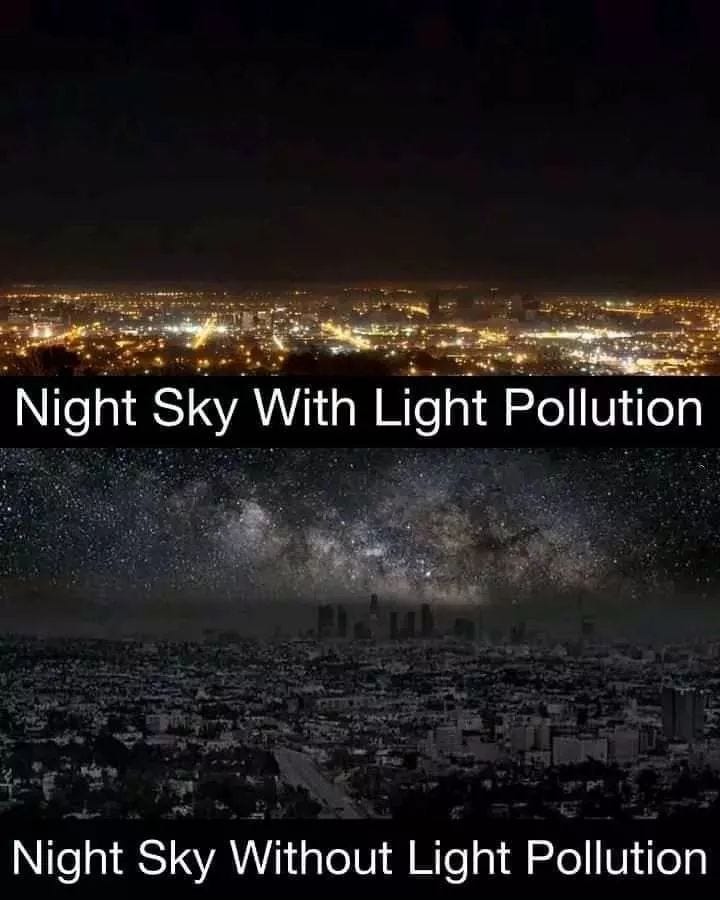
In the last few years, we’ve literally seen insect numbers decline dramatically, without even measuring or counting. In our first year here, there were dense swarms of dragonflies, for instance. Now, we see a few dozen racing around above the treetops, at most. We remember dozens of excitedly blinking fireflies crisscrossing our garden along their distinctively curvy paths at times, and now we can consider ourselves lucky if we see half a dozen at the same time. Same goes for literally every other insect – except for mosquitoes.
Of course, the insect apocalypse has many different causes. One of the main culprits are undoubtedly agrochemicals, and since dragonflies, for instance, eat other insects, pesticides bioaccumulate in their bodies, leading to the same metabolic and neurological diseases and early deaths that those toxins cause in us humans.
But light pollution is yet another hazard, yet another human invention that’s murdering insects on an extinction-event level. We have barely begun to fathom how vast and interconnected the network of symbiotic relationships really is, and how important each ever so small critter is for the entire Community of Life.
A comprehensive study from Germany (in)famously found a 76 percent decline in insect biomass over a 27-year period in protected areas, and I fully expect this rate of decline to be just as dramatic – if not even more so! – in Thailand (and other countries in the area).
And while it will be difficult to eliminate agrochemicals as long as supply chains are still up and running, lights can easily be turned off: literally at the flick of a switch.
I have a radical proposal: the night is supposed to be dark.
That’s how it was, from time immemorial. And we have no right to change that, no right to drive animals into extinction simply for a miniscule increase in the imagined feeling of “safety.”
In its relentless war against Nature, the dominant culture makes it our Manifest Destiny to “civilize” every last square mile of this planet. What this means in practice is killing off and/or selling all its inhabitants, extracting and carrying off its mineral wealth and other natural resources, dusting it with microplastics and PFAS, sealing it ( if not immediately with concrete or asphalt then at least under a hard crust of exhausted soil), and generally polluting and degrading it in every imaginable way. And, apparently, illuminating it as bright as possible.
Lights are always part of the war machinery, like the endless rain of flares that illuminated so many battlefields of the previous century. In this culture’s War against Nature, light is crucial to ensure “victory” – whatever that actually means. Presumably a moonscape inhabited only by humans and the crops and livestock we’ve domesticated. The “ideal world” for everyone blissfully ignorant of basic ecology.
We humans, diurnal primates that we are, need artificial light to be able to see at night. And if we can’t see – instead of accepting that we don’t have to be able to see every blade of grass for 24 hours each day – we make sure we fucking can. Even if no human is around. Illuminating the world is holy work – the first thing that the Christian god does in the creation story. And “let there be light” has been pretty much an unofficial slogan of techno-industrial civilization’s rampage around the planet. As I explained at the beginning of this essay, the first step in developing a society is to make sure that it is bright at night, and people can finally surpass the cruel limitations Nature imposed upon us.
Our first two years on the land we now inhabit, during which we did not have access to electricity at all, were – truth be told – not that bad. Admittedly, we charged two headlamps and our phone8 once a week at a friend’s place down in the valley, so we were not 100 percent reliant on campfires, torches, candles and oil lamps, but it was as close as you get to the unelectrified #simplelife (ha-ha) these days.
We think back to this time with great joy, and a bit of melancholia. You inhabit a different mental world when there’s no digital technology around to distract you. You get tired early, because you wake up at first light this morning. As soon as you open your eyes in the morning, you’re wide awake. You get up fast, feeling well rested, and ready for the day. During the day, you often forget that there’s other things happening on other continents, and you’re simply present in the moment, not worrying much about anything in particular that goes on beyond the horizon surrounding you. We were less anxious in those early days of our project, and sometimes we really miss it.
But the problem with electricity is that its convenience is highly persuasive, and if you have steady internet access and electrical lights, you will, of course, use them. It’s hard to “just say no” when they’re present, but perfectly possible to do without them in a situation in which they’re not.
Concluding, I have to admit that I do see a future for renewables in the so-called “developing world,” at least in the short- and medium-term – as long as the batteries can maintain a high enough voltage.9 But I’m under no illusion that they will power even a fraction of the current global economy. What will happen is that, as soon as the electricity grid becomes unreliable enough to really cause inconveniences during the currently unfolding Great Simplification,10 people will go and dismount all the solar lights scattered over the countryside, as well as dismantle solar equipment that’s not under guard (such as street lights, industrial rooftop PVs and remote solar parks), and use them in and around their homes and communities. This will buy them some time to transition to a radically less energy-intensive lifestyle, but I doubt that many of the cheap solar-light sets will last very long. At best, some rural households will have an additional five to ten years of basic electricity, for lighting and maybe a small number of basic appliances.
In time, we will have to realize that life without (or with very little) electricity is still vastly preferrable over whatever would happen if the techno-industrial system, against all odds, would find a new additional energy source to exploit – nuclear fusion, for instance – and would thus be able to continue its conquest and destruction of the biosphere. At this point, collapse is our best and only option, because nothing else will be able to stop the takeover of the Machine. Nothing else stands between us and the Machine’s ultimate goal: to transform the living world into a dead one.
But, dare I say it, fortunately, we’re running out of oil fast – and “renewables,” reliant as they are on fossil fuel infrastructure, don’t even merit being called a solution. Everyone but the most ignorant (which includes the ruling elites) know this by now.
Eventually, the night will be dark again, and nocturnal animals will rejoice and, hopefully, recover – at least to some extent.
Let’s just hope, for their sake and for our own, that this time comes soon.
I write stuff like the above in my free time, when I’m not tending the piece of land we’re rewilding here at Feun Foo. As a subsistence farmer by profession I don’t have a regular income, so if you have a few bucks to spare please consider supporting my work with a small donation:
If you want to support our project on a regular basis, you can become a Patron for as little as $1 per month - cheaper than a paid subscription!
I trust that every reader of this blog will know better, but here’s a short recap: where do the resources to make those panels come from, and how pollutive and energy-intensive is the process of manufacturing them? Well, most resources required come from mining, one of the most destructive activities of this culture. It is not only entirely powered by fossil fuels, it devastates ecosystems – even when done by hand – mostly because of the invasiveness of the process, which requires moving tons of substrate, and the highly toxic chemicals needed to leach the desired metals out of the ore. The entire manufacturing process produces vast quantities of highly toxic (and even radioactive) waste, as I have detailed elsewhere.
‘Minority world,’ for anyone who might be unfamiliar with the expression, is a term that has been steadily gaining popularity since the early 2000s, and that is used instead of saying “developed world” (which implies superiority and advancedness of some sorts – a self-serving myth that is only true from a rather abstract or reductionist perspective, as in “material standard of living,” “GDP per capita,” “car ownership rates” or “frequency of mental illness among youth”). It describes the few “economically privileged” countries, aka overdeveloped places like Europe and North America. ‘Majority world’ denotes places where the majority of people live, including South- and Middle America, Africa, the Indian subcontinent, and so-called “developing” countries like Thailand and its neighbors.
Srettha said last year that he’s “not Thailands prime minister,” but its “number one salesman.” And he doesn’t dream small: he vowed to triple the income of farmers within the next four years. Wise as ever, he told farmers that “we must raise the rice prices while reducing the costs and increasing output at the same time.” Sounds like a great strategy, right?
Our setup consists of 300W (2x150W) in monocrystalline PV panels, 200Ah (2x100Ah) in (VRLA) battery capacity, a 20A charge controller, and two Chinese pure sine wave inverters (1000W/3000W).
We use it only for having cool drinking water and occasionally for homemade banana ice cream. In rainy season or cold season we might not use it at all for some time.
Half an hour per day is pretty much the upper limit. Any longer and the motor becomes really hot, maybe due to the fact that even “pure sine wave” inverters from China create an output curve that’s not completely smooth. We could run the pump twice, once in the morning and once in the evening, but that would deplete our batteries too much, and honestly we never need more water than that anyway.
In one example, CP Land (the real estate & development arm of the powerful corporate behemoth controlling much of the country - CP [Charoen Pokphand] Group) bragged about installing 80 solar lamps (costing around 1.5 million Baht in total) along a barely used mountain road in the boondocks of Nakhon Si Thammarat for its ambitious and very sustainable “Solar Cell for Life” initiative. The executive director stated that “CP Land chose to light up the road so people could travel more conveniently at night.”
From the article linked above:
“He said the Solar Cell for Life is CP Land’s pilot project to develop remote communities where people live a tough life and do not have access to electricity. He said the […] community where CP Land has installed the lamp posts has access to electricity, but the main road used to transport the six villages’ produce is dark at night.”
One charge per week seems to impose a healthy limit on the consumption of digital media. You make sure every minute matters (so no purposeless scrolling), keep it in airplane mode otherwise, and you use it only when it’s really necessary. We were harshly reminded of the unfeasibility of this seclusion in the modern world when the Immigration Office almost rejected my annual visa extension because they couldn’t reach us for follow-up questions. The furious officer claimed to have called us every day for two weeks, unsuccessfully.
About three to five years for regular lead acid batteries.
Which might happen sooner than later in Thailand, which currently imports more than half of its energy supply and doesn’t have any impactful oil and gas reserves within its borders.






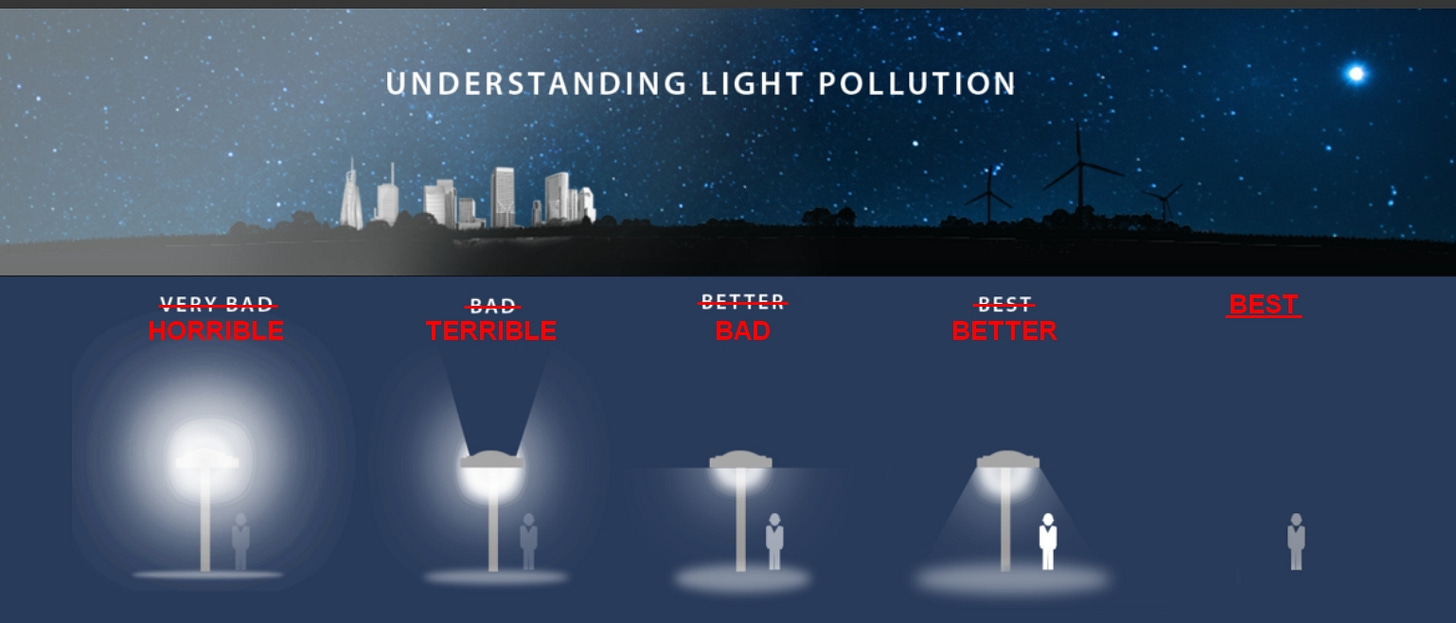
I liked your essay and I thought you brought up some really good points about how electricity changes everything about how people live their lives. It reminded me of a visit "up river" to a tribe in Central America years ago.
Some missionary group had set up a small solar system since the last time I had been there. Enough to provide power for a small refrigerator, some lights, and a television. The transformation of "after dark" life was striking.
Your observation about the "temporariness" of home solar installations was also extremely on point. This generation of pv cells has an ESTIMATED 20 year life span. Have you EVER owned anything for 20 years that didn't break at least once?
Even if it doesn't break, after 20 years ALL of these cells will have to be replaced. Across the ENTIRE planet. There is NO WAY we can produce solar on the scale necessary to power our world and yet ALL we hear is that "Renewables are the Solution".
In Diamonds book "Collapse: How Societies Choose to Fail or Survive" he has a chapter on the Norse colony in Greenland that failed. Diamond describes is how climate change made the agricultural system that the Norse had carried with them from Europe progressively more impossible to sustain.
Year after year, every winter there was less food to go around and the population got smaller and smaller as people died from the effects of malnutrition and starvation.
Until the last desperate survivors probably built a boat, out of wood salvaged from abandoned houses, and tried to sail back to Europe. A trip they never completed.
What makes Diamond’s recounting of this story so compelling is that he shows these people didn’t have to die. The Greenland colony didn’t have to fail.
What everyone focuses on is how the changing climate made the Norse way of life progressively more impossible to continue. Until everyone starved to death and died. We tend to see this as a "tragic" battle of people against a tide they could not stem.
Diamond points out that they were not the only people in Greenland at the time and, that the “other people”, the Inuit, did just fine in the cooling climate.
What killed the Norse wasn’t the changing climate, it was their unwillingness to change and adapt to it. They were willing to literally die, before they would give up their European way of life and adopt the lifestyle of the indigenous people who they seem to have despised.
We don't need "renewables", in a vain attempt to cling to the 20th Century American "way of life". What we need is a vision of a "post industrial" way of life that doesn't suck.
The majority of Americans seem unwilling to entertain even modest changes in their lifestyle in order to slow the progression of the climate disaster about to engulf the world. Major social change is almost impossible.
Right on my friend. All of it. In my community in Oregon we have rules against lights at night. We love the night sky and it is still pretty great. And I agree . . . collapse is the best option, the sooner the better. That's a very hard one to say considering I have grand kids but for the long term health of wild nature, it makes the most sense.